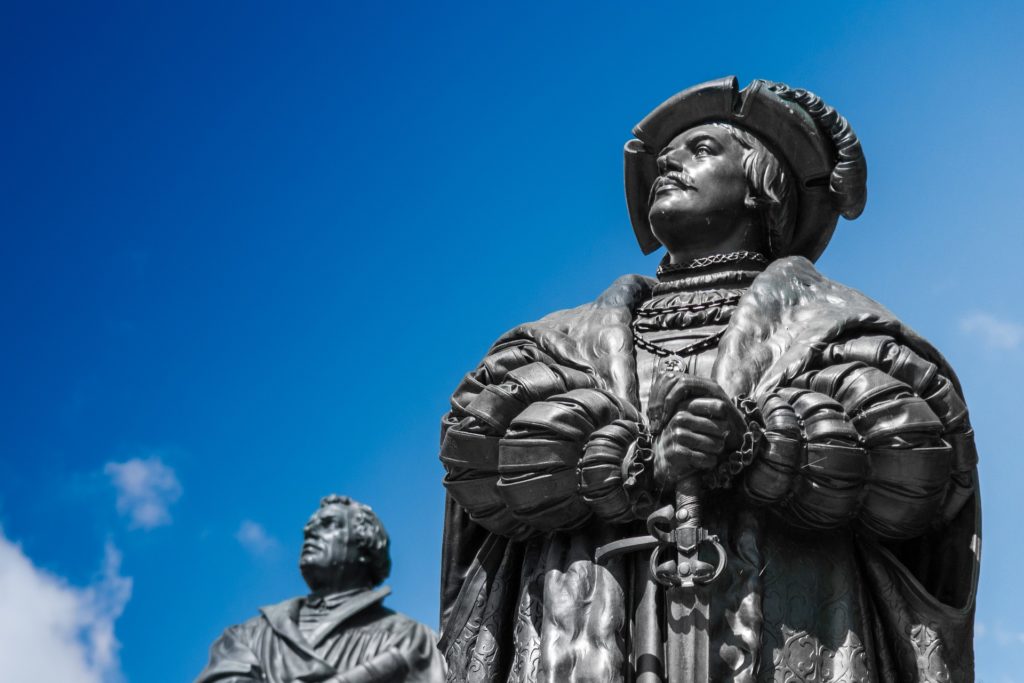 The Protestant Reformation can be considered as successful because it led to creation of new independent national Christian churches which became predominant in a number of European countries and later in their colonies. The reformation movement was a protest against omnipresent power and abusive richness of Roman Catholic Church and its pope. Complicated rituals and sermons in Latin as well as excessive wealth of Clergy offended city dwellers and feudal rulers. Protestants wished to restore the doctrines and practices of the early Christian church described in the Bible and the New Testament. They rejected the supremacy of the Roman pope and did not want to support financially catholic bishops and priests.
The Protestant Reformation can be considered as successful because it led to creation of new independent national Christian churches which became predominant in a number of European countries and later in their colonies. The reformation movement was a protest against omnipresent power and abusive richness of Roman Catholic Church and its pope. Complicated rituals and sermons in Latin as well as excessive wealth of Clergy offended city dwellers and feudal rulers. Protestants wished to restore the doctrines and practices of the early Christian church described in the Bible and the New Testament. They rejected the supremacy of the Roman pope and did not want to support financially catholic bishops and priests.
The precursors of reformation were John Wycliffe who translated the bible into English in 1382 and Jan Hus who partially rejected the Catholic doctrine and was burned on a stake in 1415.
Officially, Reformation in Europe started on Oct. 31, 1517 when a German priest and professor of theology named Martin Luther posted 95 theses on the church door in Wittenberg, Germany, inviting debate over the legitimacy of the sale of indulgences. The papacy was offended by his gesture and he was excommunicated in 1521 but in April of that year at the Diet at Worms he explained his views to the Holy Roman Emperor, Charles V and the German princes. He believed that forgiveness could not be bought for money but only through faith and penitence. After the diet, to avoid arrest he found refuge in the Wartburg castle, where he translated the new testament into German. In 1526 he married a nun named Katharina Von Bora and had 6 children, this action set a model for the practice of clerical marriage for Protestant priests. Luther died in Eisleben in 1546. Propagation of Luther’s teaching resulted in peasant revolt in Germany in 1524.
In Switzerland, Luther’s ideas were spread by H. Zwingli. His example was followed by John Calvin who rejected the spiritual authority of Rome, and preached from Geneva, the supremacy of the Scriptures, and inevitability of predestination. His ideas were eagerly accepted in France by the opponents of Catholic doctrine called Huguenots. Contradictions between Catholics and Huguenots erupted in France into 30 years of religious wars. Their most famous episode was the St-Bartholomew’s night in 1572 where, only in Paris, 3000 Huguenots where killed by Catholics. In 1685, by the edict of Louis XIV, all Huguenots were banished from France.
Reformation in England started in 1534 when the king Henry VIII broke with the pope of Rome and established the Church of England with himself at its head. He appointed the Archbishop of Canterbury as the spiritual leader of England. This was the birth of Anglican church. Later, Mary Tudor, in the 1550’s returned to Catholicism and prosecuted Anglicans. Anglicanism was restored by queen Elizabeth in the 1570s. Several religious groups like Puritans, Baptists, Quakers and Congregationalists were unsatisfied by official religion and separated from it . Puritans who preached rigorous moral and strict religious discipline were especially numerous in Scotland and Ireland. During the English Civil War (1642-1651), they supported Cromwell and came with him to power. Anglicanism was finally restored by Charles II in the 1660’s. After that many Puritans, Baptists, Quakers preferred to immigrate to American colonies.
Reformation in Sweden was introduced in 1527 during the reign of King Gustav I. Swedish protestants headed by the king Gustavus Adolphus helped the German Lutherans to resist the aggression of the Holy German Empire. As a result of the 30 years` war (1618–1648), Prussia, Saxony, Bohemia, United Provinces, and Silesia, Lutheranism took predominant position.
In such a way, reformation in Europe permitted to all opponents of Catholicism to form new protestant churches which after long-term struggle prevailed in a number of European countries. The power of Catholicism was shattered and even in countries where Catholicism remained predominant all religious dissidents could move to places where they could confess their beliefs.